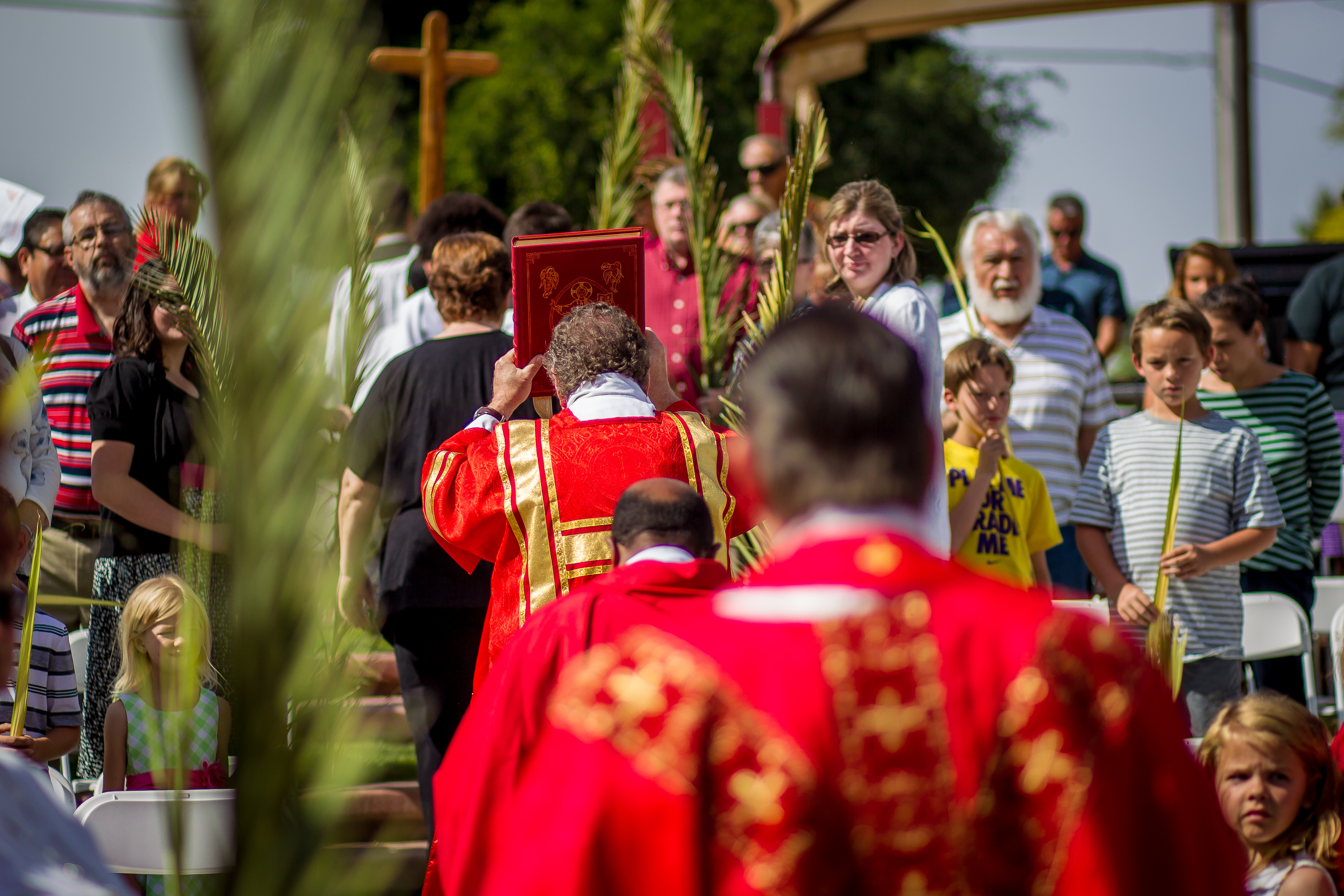The liturgical movement of Holy Week, celebrated this year March 20-27, gives us an opportunity to journey with Jesus through the last days of His life. Beginning with Palm Sunday, we go from the “Hosannas,” and the applauses to the mocking, “Crucify Him.”
Holy Thursday, Good Friday and Holy Saturday — the Triduum — constitute three days that changed the world. In the liturgies we encounter Jesus with His Apostles in the Upper Room, in His suffering and abandonment of His closest friends, Death and Resurrection. Every liturgy celebrates the Paschal Mystery, but these three days help us to reflect on these actions as we encounter Jesus on the way to the cross and the tomb.
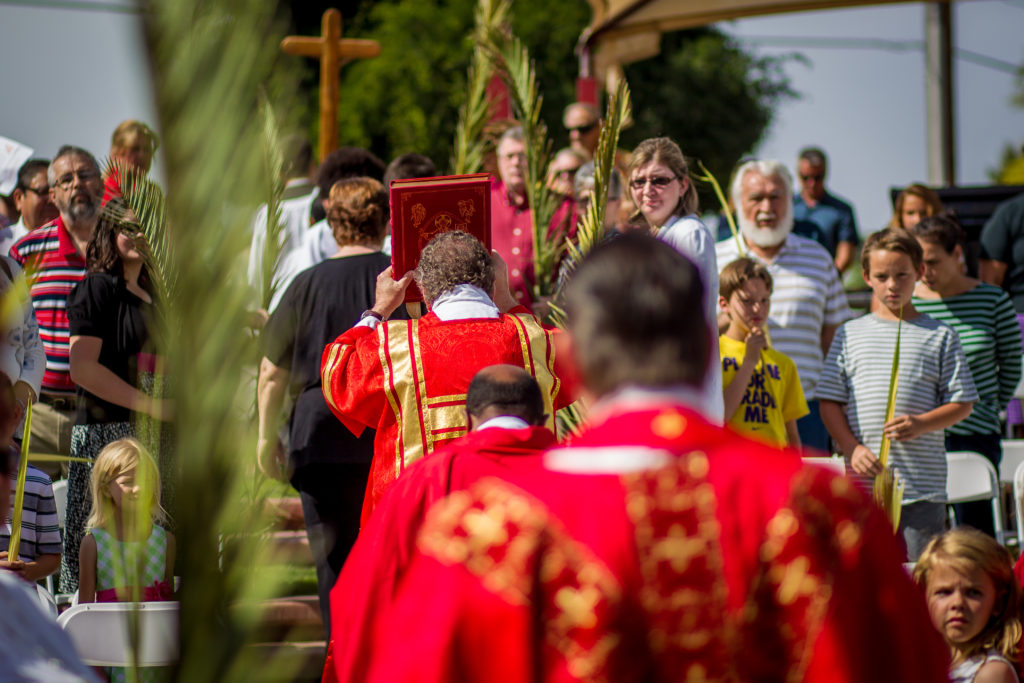
Palm Sunday inaugurates Holy Week as we commemorate the Lord’s triumphal entry into Jerusalem. Unlike the Jews of the time who welcomed Him as the earth’s king, we understand that the triumphal entrance into Jerusalem is our salvation, explained Fr. Kieran Kleczewski, director of the diocese’s Office of Worship and Liturgy and pastor of St. John Vianney Parish in Sedona.
“His death, suffering and the cross is the reason He was born and came to the world to be a perfect sacrifice and redeem humankind,” he said. “This is the most important celebration of our faith. Without Holy Week, there would be no Christianity.”
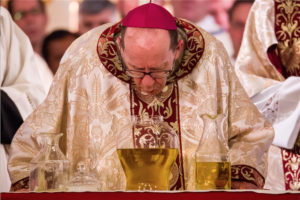
The Chrism Mass, which takes place on Monday evening of Holy Week at Ss. Simon and Jude Cathedral, is a tradition rooted in the early Church. The rites include the blessing by the bishop of the oils that will be used in the administration of the sacraments of the diocese for the year. The oil of catechumens to be used for the administration of Baptism, the oil of the infirm for the Anointing of the Sick and the holy chrism for Baptism, Confirmation and Holy Orders.
“It is also a time for the renewal of priestly vows,” said Fr. Kleczewski. “Together with the bishop, they renew the pledge of who they are and the promises they made. It is also a nice custom in that it is a day of recollection for the priests. They can get away, have dinner and attend the 7 p.m. Chrism Mass.”
On Holy Thursday, there is only one evening Mass celebrated at the parish. It is Jesus in the Upper Room with His disciples. He now must accept the mission. In a sense, it’s a farewell meal, and at the same time it is establishing a meal for the ages through which He gives Himself to His disciples for all time under the appearance of bread and wine, His Body and Blood.
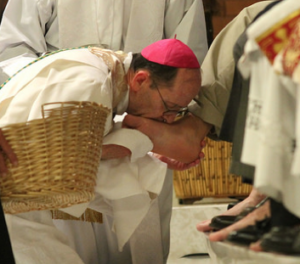
“The other thing that happens, aside from establishing the priesthood, is when Jesus washed the feet of His disciples. In ancient society, this would have been the duty of the slave and the fact that the Lord would do that was unusual,” explained Fr. Kleczewski. “The priest takes on the role of Christ in washing the feet of 12 who are standing in for the Apostles as a reminder of what Jesus did. This is a reminder of Christ’s enormous love for us and what He did for us and a call for us to be of service to one another in daily life.”
After the liturgy, the tabernacle is emptied and the Eucharist is placed at an altar of repose so the faithful may offer Adoration. The next day, Good Friday, is the only day in the entire liturgical year that the Holy Sacrifice is not celebrated. Therefore, Communion that will be distributed during the Good Friday services will be consecrated at the Holy Thursday liturgy.
Illustrated guide to the Triduum
What happens each day, what you’ll see at Church and how to live the day
Fr. Kleczewski explained that the Good Friday service consists of three parts. They are the Liturgy of the Word, which is the reading of the Passion; the universal prayers and the veneration of the cross; and the reception of Holy Communion.
“Every year, we read the St. John Passion and that can be read by three readers, sung by three cantors or sung by the entire choir,” he said. “Some parishes may begin at noon so that people can come and pray, but the traditional time is 3 p.m. as that is the time Jesus died on the cross.”
Not coincidentally, also happening on Good Friday is the annual Rosary for Life with Bishop Thomas J. Olmsted from 11 a.m. to noon at the Glendale Planned Parenthood, 5771 W. Eugie Ave.
“The bishop refers to these abortion clinics as the Calvary in our midst, where the innocent one is put to death,” said Mike Phelan, director of the diocese’s Office of Marriage and Respect Life. “The first Christians, Mary and John were there for the Lord on Good Friday, so we need to be there for the innocent ones in our own time and our place. Praying there is an act of radical solidarity with the unborn children and their mothers and all those who suffer, including the abortion workers and Christ Himself. This is always a moving hour of prayer.”
Those attending are encouraged to bring water and umbrellas for shade and to park on the streets east of the site.
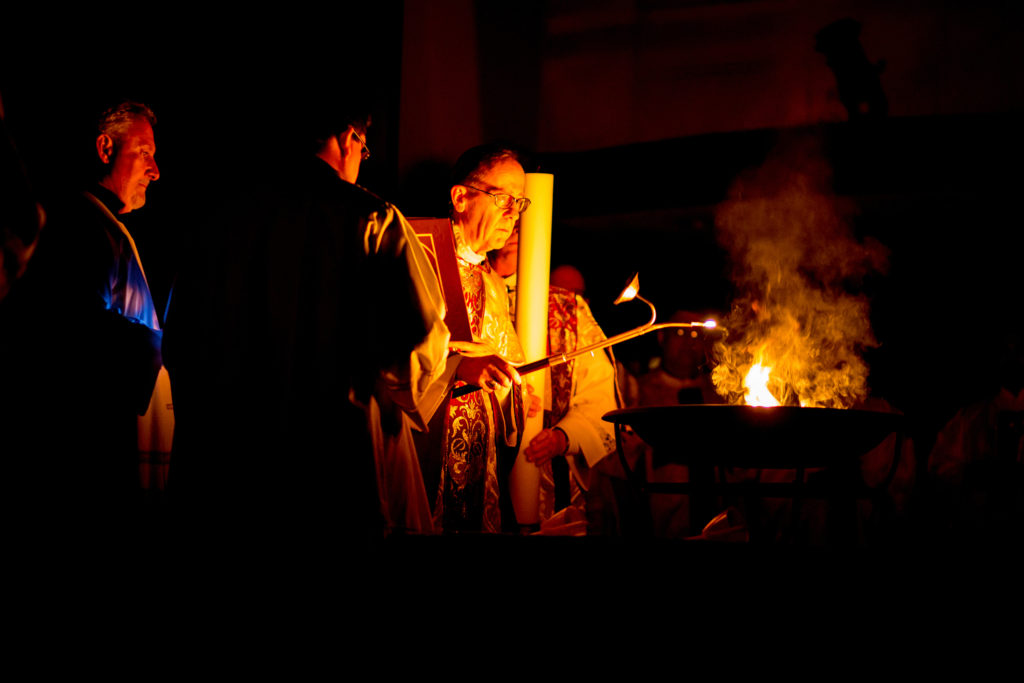
The Holy Saturday Vigil Liturgy is filled with symbols. Fire is blessed and used to light the Easter candle, which pierces the darkness as it is brought into a darkened church. It represents the light of Christ, which has come into the world.
The Word is proclaimed as salvation history is traced through the Old Testament foretelling, through the history of Israel and the prophets, the coming of the Messiah.
The “Glory to God” is sung for the first time since the beginning of Lent. It embodies the new mood of rejoicing at the glory of the Resurrection. All three sacraments of initiation are administered at the vigil: Baptism, Confirmation and Communion.
“This is all about the new life of Christ and what He went through for us by His suffering and death and the tradition is always the waters of baptism as we enter into the death of Christ, dying to our old life and rising to our new life in Christ,” said Fr. Kleczewski. “The catechumens are fully initiated into the life of the Church and the prayers during the Easter Season refer to the newly baptized.”
Unfortunately, the Easter Triduum is generally not well attended, which Fr. Kleczewski remarked is very sad.
“These are beautiful liturgies and I remember when I grew up in Green Bay, Wisconsin, I would ride my bike to the cathedral to attend these liturgies as they are wonderful,” he said. “Most parishes put a big effort to prepare and someone should go at least once to witness this beauty.”
Fr. Kleczewski added that it is important during the Triduum to take time and celebrate with the Church if only to remind ourselves how blessed we are to have a God who loves us.



